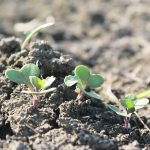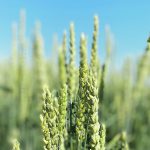WINNIPEG — Last year at harvest time, farmers across western Manitoba and parts of eastern Saskatchewan had a similar reaction. When they looked at yield monitors in their combines, they were surprised at figures of 60 to 75 bushels an acre for spring wheat, despite lack of sufficient moisture during the growing season. Other stories […] Read more
Tag Archives yield — page 2

Farmers aim for higher yields with less moisture
Trevor Hadwen says recent snowfall in many parts of the Prairies is welcome but is a “drop in the bucket” when it comes to rebuilding soil moisture reserves. The agroclimate specialist with Agriculture Canada’s National Agroclimate Information Service in Regina says a lot of the winter precipitation to date has been lost to the atmosphere. […] Read more

Counting heads, narrower rows may help wheat yields
It takes a lot of math to grow a high-bushel wheat crop — number of heads, spikelets per head, grains per spikelet and more. However, Phil Needham said spending some time thinking about these and quantifying them can help growers get the best from their seeds. The U.K.-born, U.S.-based agronomist told the SaskWheat semi-annual meeting […] Read more




